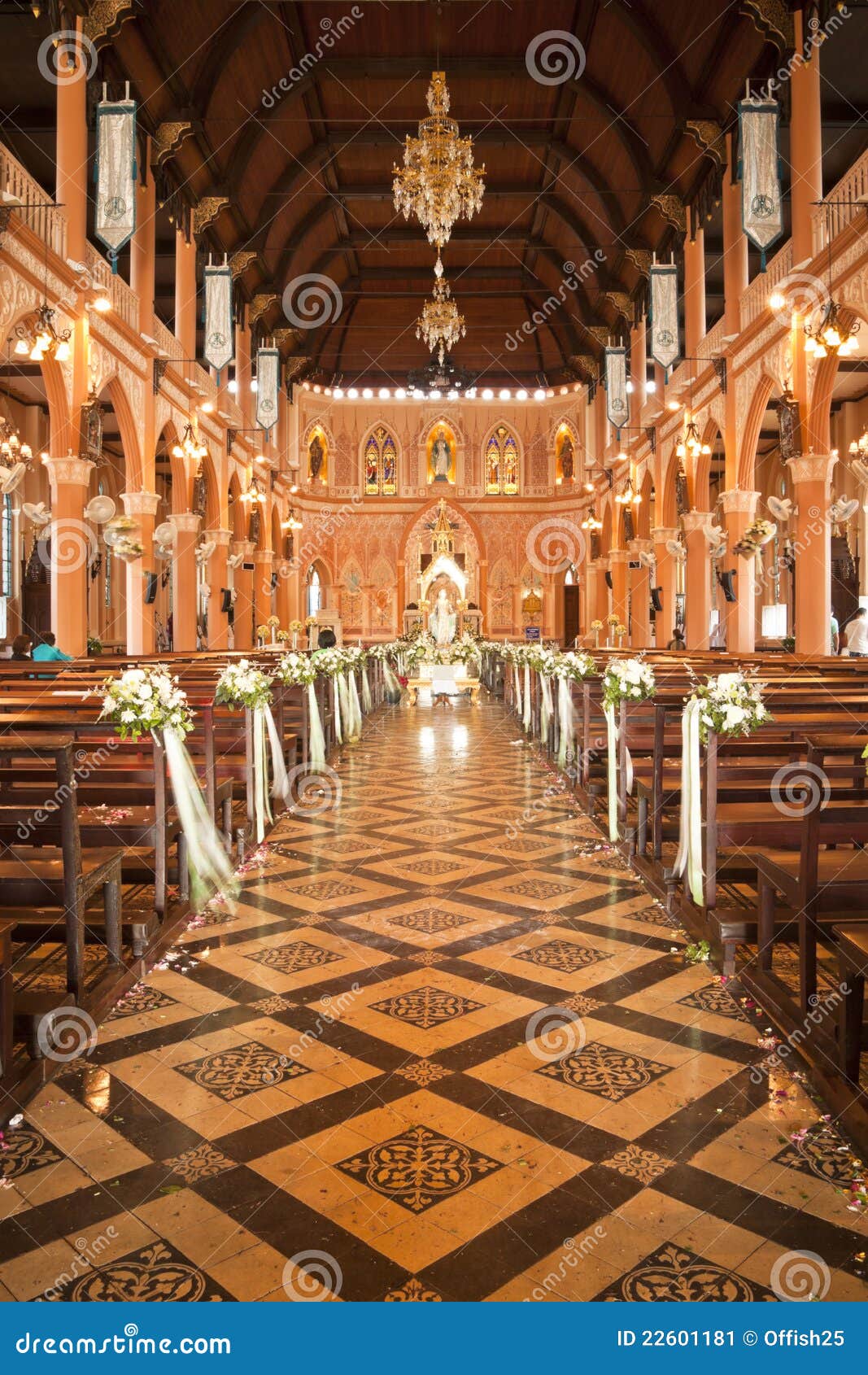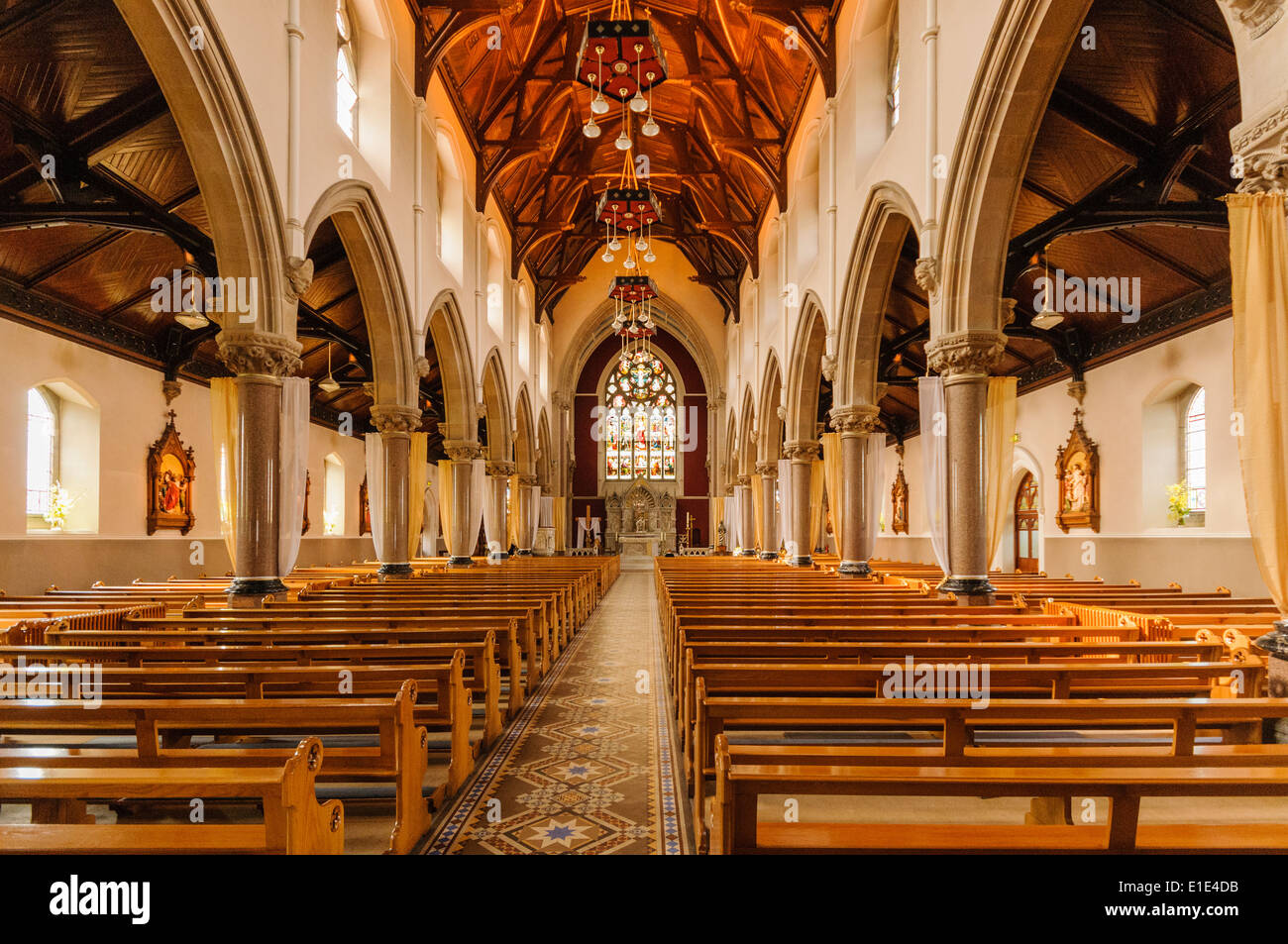Exploring Inside Roman Catholic Churches: Symbols & Architecture
Does the architecture of a building truly speak volumes about its purpose and the faith it houses? Within the hallowed halls of Roman Catholic churches, a profound narrative unfolds, meticulously crafted through design and tradition, inviting believers into a space of reflection, reverence, and connection with the divine.
The very essence of a Roman Catholic church is often revealed in its architectural blueprint. The cruciform plan, a layout derived from the shape of the crucifix, is a hallmark, present in countless churches across the globe. This foundational design serves as a powerful symbol of Christ's sacrifice and subsequent resurrection, providing a tangible link to the core tenets of the faith. This deliberate design, replicated worldwide, acts as a unifying force, reinforcing the continuity of the Catholic faith across geographical boundaries and through the ages. It's a silent testament to the enduring nature of the church's mission.
Within these sacred structures, a series of carefully chosen elements coalesce to create an atmosphere conducive to prayer and contemplation. The architecture itself, the placement of the altar, the use of light, the presence of stained-glass windows depicting biblical scenes all these details contribute to the overall spiritual experience. As Augustine beautifully said, "Faith is to believe what you do not see; the reward of this faith is to see what you believe." The architecture of the Catholic church becomes a visual embodiment of this very principle, creating a tangible representation of the unseen, encouraging the faithful to delve deeper into their beliefs.
The Roman Catholic Church boasts a rich history and a profound theological depth. A central element of this is the practice of sacraments. The Catholic Church recognizes seven sacraments: Baptism, Confirmation, Eucharist, Penance, Anointing of the Sick, Holy Orders, and Matrimony. These sacraments, are considered outward signs instituted by Christ to give grace. The sacraments are essential in the life of a Catholic, marking important milestones and providing channels for receiving God's grace. From the baptism that welcomes a newborn into the faith to the final sacrament of anointing the sick, each sacrament is a sacred moment of spiritual connection.
The evolution of theological understanding within the Roman Catholic Church is continuous. A fascinating contrast can be drawn between historical statements and more contemporary interpretations. Consider the shift in understanding regarding certain theological concepts. This evolution reveals a living tradition that adapts while preserving its core values. This ongoing evolution of theological thought speaks to the Church's engagement with the contemporary world.
Beyond the primary architectural structure, specific elements within a Roman Catholic church often hold unique significance. A Lady Chapel, for instance, serves as a dedicated space for veneration to Mary, the Mother of God. This devotion to Mary is an essential part of the Catholic faith, with chapels and altars dedicated to her found in churches across the world. These spaces provide opportunities for private prayer and reflection on the role of Mary in the Christian faith.
Its important to note that the appearance of other Christian churches, such as those of the Anglican faith, can share similarities with the architecture of Catholic churches. Anglican churches, too, often feature a cruciform plan and a sanctuary located at the east end, demonstrating a shared heritage and a common understanding of sacred space. While some similarities exist, the use of symbols, and the specific liturgical practices often differ based on the denomination.
Consider the location of the Basilica of San Giovanni in Laterano, located in the southern part of Mount Celio. As the official ecclesiastic seat of the Roman diocese, this church holds enormous significance. Furthermore, the Lateran Palace, where the Lateran Treaty was signed in 1929, which formalized the relationship between the Italian Kingdom and the Catholic Church, underscores the historical and political significance of the church within the broader context of Rome and the world.
In contrast, consider a modern marvel. The Roman Catholic Diocese of Orange in Garden Grove, California, unveiled ambitious design plans for the Christ Cathedral. This reflects how the Catholic Church continues to address the needs of its growing community. Such projects demonstrate that the church is actively adapting to the needs of its faithful.
Let us take a moment to virtually explore the largest Roman Catholic church in North America. The immersive experience provided by virtual tours helps us gain a deeper appreciation for these magnificent spaces. By exploring the great upper church, the sanctuary, the crypt church and memorial hall we gain access to parts of the church often unseen by the public. These virtual tours offer an invaluable opportunity to connect more deeply with the sacred spaces that comprise our faith.
In the heart of West Midlands, England, stands St Giles' Roman Catholic Church in Cheadle. Every inch of its interior is highly and intricately decorated, with gilded accents, the building is testament to a devotion that goes beyond the functional. The spire of this grade I listed building is a towering statement, signifying the church's prominence and its role in the community. The Church of Holy Trinity, also known as St. Roch, in Minsk, the stained glass windows capture the light and direct the eye to the heavens, adding beauty and telling stories that are central to our faith.
Catholic symbols are present in many aspects of the church. Whether adorning a church, a home, or worn as a piece of jewelry, Catholic symbols touch hearts and souls. These symbols include, the crucifix, the rosary and the various saints displayed. They offer comfort, guide us and help us to fully embrace our faith.
Let's take a look at some key data:
| Aspect | Details |
|---|---|
| Architectural Plans | Cruciform plan (shape of a cross), Lady Chapels, Sanctuary. |
| Sacraments | Seven sacraments: Baptism, Confirmation, Eucharist, Penance, Anointing of the Sick, Holy Orders, and Matrimony. |
| Notable Churches | Basilica of San Giovanni in Laterano (Rome), Christ Cathedral (California), St Giles' Roman Catholic Church (Cheadle, UK). |
| Key Symbols | Crucifix, Rosary, Stained Glass, and more. |
| Historical Significance | Lateran Treaty of 1929; Ongoing evolution of theological thought. |
Find more information at: No official website provided.


